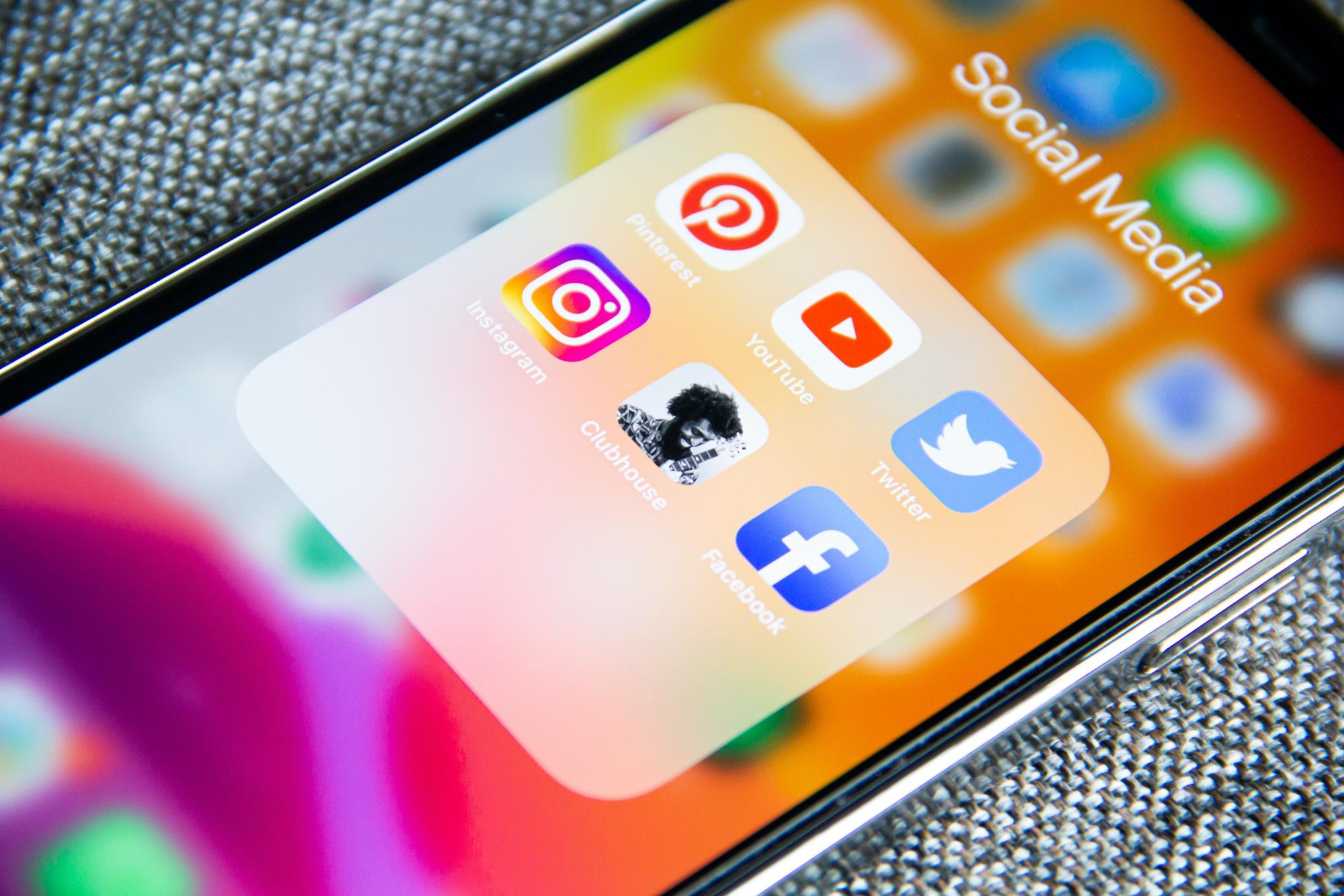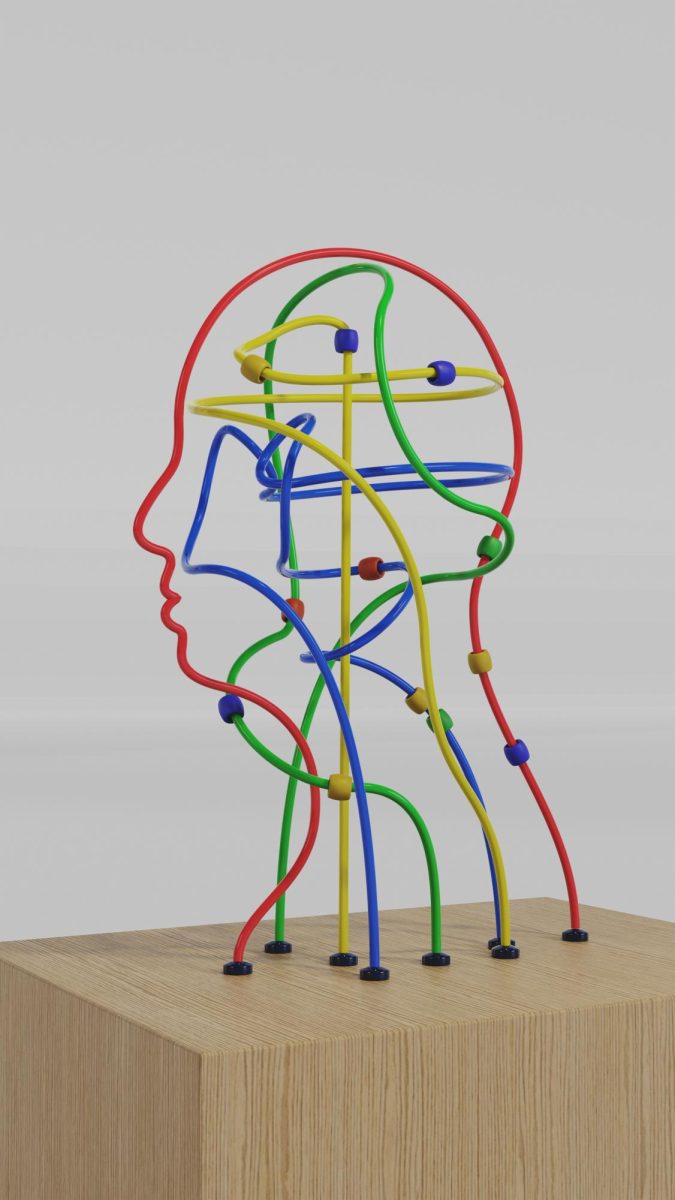(This story was originally published as Social Media Affects Education and Teenagers’ Success in School in The Elevator in June, 2023.)
The scene is the same in many high school classrooms. Instead of working on school work or listening to the teacher, students are looking down, completely glued to their phones.
More specifically, they are scrolling social media.
Social media is very popular, especially amongst teenagers. A study from University of Nevada, Reno stated that roughly 90% of teenagers use social media. In addition, a survey from Real Research Media reveals that the majority of teenagers report that they spend more than five hours a day on social media.
This time spent on social media inevitably cuts into school, with many students spending a lot of class on their phones instead of doing school work.
Karlie Sanchez, a Spanish teacher at Oregon City High School said that student phone use is “out of control… because kids today do not have the self control to keep it away when it should be away.”
Becoming More of an Issue
Social media is a relatively new development. One of the earlier forms of social media, MySpace, was invented in 2003. Since then, social media has become increasingly popular, with new apps such as Facebook, Twitter, Instagram, Snapchat, and TikTok captivating the interest of users.
In addition, social media use amongst teens has skyrocketed in recent years. A study from Pew Research Center shows the amount of teens who are online “almost constantly” has increased by 22% between 2015 and 2022.
This rapid increase in social media use and change in technology has worried some people.
Sanchez said that “it’s scary how fast technology is changing.” She said that social media is very different from how it was when she was a teenager, which was only about ten years ago.
Because of the rapid increase in use of social media and the change in technology, teenagers today have a much different experience than the teens of previous generations.
Eric Dewitz, an Economics teacher at OCHS, described how things were different for teenagers of his generation than teenagers today.
It was easier to focus in school. If students weren’t paying attention, the most they could do was pass a note to their friends, but now students have entertainment right there in their hands to be distracted by, said Dewitz.
“I have been teaching for 32 years, and nothing has changed education and my job more than the cell phone,” said Dewitz.
Social Media and School
Cell phones, and more specifically social media, have undoubtedly changed education in numerous ways. Not only does it affect student’s lives outside of school, but it also affects their ability to do their school work.
Many teachers and students have identified constant social media use at school as a big problem that has the potential to harm students and affect their grades.
Akayla Moody, a freshman at Oregon City High School says that social media greatly affects her school work. “It’s very distracting and ruins my attention span,” she said.
Nicholas Bertram, a teacher at OCHS, agrees that social media is very distracting for students.
Students are distracted from what is happening in the classroom because they are fixated on something that is happening on social media, he said.
This distraction, however, does not seem to affect all students equally. Teachers, including Dewitz, have noticed that students who already struggle in class are more heavily impacted by social media. Dewitz noted that students who struggled more in the past seem to struggle even more now because of social media.
He said that this makes the gap between the “high achievers” and the “students who are struggling” even wider.
Not All Bad
This is not to say that social media is all bad. Both teenagers and teachers agree that it does have beneficial uses, whether that be socially or in the classroom.
Social media is a useful tool to spread information and keep people connected. Teenagers today are able to stay very connected to each other, which wasn’t possible before social media, said Coleen Lightner, a math teacher at OCHS.
A study from Pew Research Center says that roughly two thirds of social media users say that one of the major reasons they use social media is to stay in touch with friends and family members.
Delaney McFarland, a junior at OCHS, shares this idea. “There’s people I wouldn’t connect with often if I didn’t have it,” she said. McFarland uses social media to connect with people from other schools or people who she meets through clubs.
Some teens use social media for more practical reasons. Taylor Kirkpatrick, a freshman at OCHS, shared that she uses social media to find recipes or learn how to do crafts.
Some teachers even think that social media has uses in the classroom, such as being part of school assignments or as a way for students to communicate in a group project.
One way students can use social media in school is to do projects that use social media, said Sanchez. She remembers an English assignment that she did in high school that was to make instagram accounts for famous poets.
Surgeon General Warns About Social Media
The surgeon general, Vivek Murthy, has recently issued an advisory about the effects that social media can have on teenagers.
This report confirms that social media affects teenagers in many ways, and highlights specific concerns that social media poses.
Some of these concerns include social media causing difficulty paying attention, inappropriate content, predatory behaviors, and problems sleeping.
This advisory also encourages officials to protect children from accessing harmful content on social media and enforcing age minimums to stop younger children from accessing social media.
“It is no longer possible to ignore social media’s potential contribution to the pain that millions of children and families are experiencing,” said Murthy, in an op-ed published in the Washington Post.
What Can Be Done
Many teachers agree that something should be done to control social media at school. There is not, however, a consensus on what exactly should be done.
Some teachers, such as Dr. Stephanie Ota, a Chemistry teacher at OCHS, think that it should be up to students to manage their own phone use. “I think part of learning is learning how to manage your own behaviors, and so while I think that it’s easy to get distracted, it’s also impossible to police that behavior,” Ota said.
Other teachers use methods such as phone pockets, where students are required to put their phone in a holder at the start of every class. Most teachers who use this method receive a lot of pushpack, as students don’t like to be separated from their phones.
Some other teachers, such as Ms. Sanchez, simply monitor phones and take them away when they become a problem. “I don’t usually have any push back on that,” she says. “Kids know that when I tell them that I need the phone it’s mine now, they give it to me.”
Students have even more ideas for the best way to control social media.
Using time limits to limit screen time to an hour or two a day would be beneficial, said Shaleen Issacson, freshman at OCHS.
McFarland thinks that education and mental health services are a good solution. A lot of people turn to social media when they can’t deal with what’s in reality. Mental health services would make it so people don’t have to turn to social media when they are struggling, she said.
While there are no clear solutions to controlling social media, the American Physiological Association recently released recommendations aimed at teens, parents, teachers, and policy makers for how to manage social media use.
Some of these recommendations include monitoring teenagers behavior towards social media and education about how to use social media safely.
APA President Thema Bryant, PhD, said that “our youth need instruction in the safe and healthy use of social media,” as quoted by the APA.
To learn more about these recommendations, visit the APA website at https://www.apa.org/







